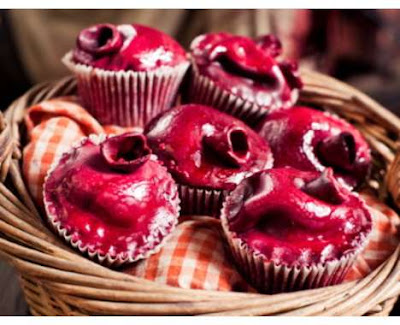 |
| The strange Voynich manuscript boinks cerebral scholars. |
The
University of Arizona has recently redated a puzzling manuscript known as the Voynich Manuscript. Most scholars, who have been unable to decipher its script or make sense of its drawings, had thought it was created in the 16th century. But modern radiocarbon dating reveals that the pages hark back to the early 15th century, making it a century older than previously thought.
U of A researchers first performed C14 dating in 2009, and they then concluded the parchment was created between 1404 and 1438. The McCrone Research Institute in Chicago was also able to determine that the ink was added soon afterward. Experts think the manuscript most likely comes from Northern Italy. One significance of the accurate dating is that it places it in a time when coded texts were in fashion, and thus allows scholars to discard encoding techniques that were used later than the date of the manuscript and concentrate on contemporary ones.

The manuscript is composed of approximately 240 vellum pages, most of which are illustrated. The unknown script in an unknown language by an unknown author has caused it to be considered the world's most mysterious manuscript. It has been studied by professionals and amateurs alike, including codebreakers from both WWs, to no avail. From the gaps in numbering it seems the manuscript once had at least 272 pages, and they are thought to have been reordered, maybe even several times, from the original sequence. A quill pen was used for both text and drawings, and the figures were roughly painted, possibly at a later date.
 |
| Stars or flowers seem to serve as bullets. |
Experts believe the text was written left to right with no punctuation, although there are flower or star bullets in some places in the left margin. Some of the words occur only in certain sections, for instance in the herbal section the first word on each page only occurs in that place, hence is logically the name of the plant being discussed. While the lettering resembles European alphabets of the time, these words do not make sense in any of the European languages. Ten of the months (March to December) are written in Latin in the diagrams of the astronomy section, but may have been added later.
 |
| Text sample. |
The illustrations are not helpful in decoding the text, but seem to suggest that the book was arranged in six sections: herbal, astronomical, biological, cosmological, pharmaceutical, and recipes. Except for the recipes section which is all text, the other sections have at least one illustration on almost every page. The manuscript seems to be a pharmacopoeia or early medical book. However, none of the plants in the herbal section are readily identifiable. Since the text is undecipherable, the illustrations are the only clues for this manuscript. The human figures wear dress and hairstyles that are European, and the castles are European as well.
 |
| Possibly nymphs from the Biology section. |
The earliest mention of the book is in a 1639 letter from then owner George Baresch, a 17th century Czech alchemist, to Athanasius Kircher, a Jesuit Scholar at the Collegio Romano who had published a Coptic dictionary. Kircher tried to acquire it, and finally did after Baresch left it to a mutual friend, rector Jan Marek Marci, when he died. Marci sent it to Kircher. The next 200 years of the manuscript's history are unknown. It is accepted that it was in the Collegio Romano with the rest of Kircher's papers. In 1870 the Papal States were annexed, and books from the library were furtively transferred to the personal libraries of the staff to avoid confiscation.
 |
| Plant illustration. |
The Voynich manuscript still has the mark of
ex libris of Petrus Beckx, who was the head of the Jesuit order. Beckx's library was moved to the new headquarters of the Jesuit Ghislieri College in 1866. By 1912, the Collegio Romano was short of funds and quietly sold some of their effects. Voynich is said to have found it while sifting through a chest of books for sale. He spent the next 18 years trying to make sense of the manuscript but made no headway before he died.

Many scholars have and do consider the manuscript to be a hoax, however it is very sophisticated. There have been many attempts to identify the author but all are inconclusive. In Marci's cover letter to Kircher upon sending him the book, he claimed that book had been bought by Holy Roman Emperor and Bavarian King Rudolf II (1552-1612) for a sum that would now be about $80,000, and suggested the author may have been Roger Bacon, a fact which Voynich tried to confirm. John Dee, a mathematician/astrologer in the court of Queen Elizabeth I, has also been suggested as author. Dee's scrier, or crystal gazer, Edward Kelley claimed to invoke angels and have long conversations with them, which Dee wrote down. The angel's language he called Enochian, after Enoch, the father of Methuselah, and some scholars also think that Kelly may have fabricated the Voynich manuscript.
 |
| From the Astronomy section. |
There are those who think Voynich may have manufactured it himself. As an antiquarian book dealer, he had the knowledge and the means to acquire the materials. The correspondence concerning it may not refer to the manuscript that currently exists, and may have led Voynich to fabricate the manuscript and push for the Bacon authorship, which would drive the price up. But this is only one of many theories, and none currently are satisfying. Some scholars even think it may be the work of multiple authors.
 |
| Wilfrid Michael Voynich in 1885. |
There are so many interesting aspects to this manuscript, way too many to go into here. Real or hoax, and regardless who wrote it, it is a fascinating puzzle. But another puzzling aspect about it is how Voynich came upon it.
Michał Wojnicz (later known as Wilfrid Michael Voynich) was a Polish revolutionary who went to London in 1890 and worked for anarchist and nihilist organizations until at least 1896. Suddenly he morphed into an internationally known antiquarian book dealer by 1898, but little is known of this transformation. An even more interesting question is where he got the funds to purchase the hundreds of rare books that he displayed in his London shop. In 1914 he moved to New York, and opened another book shop. He died in 1930. His wife Ethel Lilian Boole (daughter of mathematician George Boole) inherited the book. When she died it passed to her friend and her husband's former secretary, Anne Nill, who eventually sold it to rare book dealer Hans P. Kraus. When Kraus couldn't get his asking price of $160,000, he donated to Yale University, where it is kept in the Beinecke Library as MS 408.
 |
Ethel Lilian Voynich, from the frontispiece of
Book News, Vol. 20, No. 229, published by
The National Book League, Great Britain |
Much has been written about the
Voynich manuscript - books, articles for both popular magazines and scholarly journals, and online. It is continually being analyzed and theorized. A facsimile of it was published in 2005. Hopefully, with all the attention it is receiving, its mysteries will be revealed and the puzzle finally solved.
***************
All images courtesy of Wikipedia.
***
***
If you would like to contribute to the discussion or keep abreast of the current
research on the Voynich manuscript, you may want
*******************************
















































